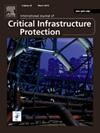工业场景中的数字双胞胎辅助异常检测
IF 5.3
3区 工程技术
Q1 COMPUTER SCIENCE, INFORMATION SYSTEMS
International Journal of Critical Infrastructure Protection
Pub Date : 2024-10-23
DOI:10.1016/j.ijcip.2024.100721
引用次数: 0
摘要
工业 5.0 是当前的工业范式,它继承了其前身工业 4.0 的技术多样性,但包括三个优先目标:(i) 复原力、(ii) 可持续性和 (iii) 以人为本。通过这三个目标,工业 5.0 在工业生态系统中追求更深远的数字化转型,并提供高度的保护保障。然而,为实现这一新的数字化转型而部署创新信息技术时,也需要考虑其隐含的脆弱性和威胁,以避免对工业 5.0 的三大目标产生任何负面影响,并优先考虑网络安全方面,以确保可接受的保护水平。因此,本文提出了一个由数字孪生(DT)和机器学习算法组成的检测框架,用于在线保护,支持工业 5.0 所寻求的复原力。为了验证这种方法,这项工作包括在一个真实的工业控制测试平台上进行几项实际研究,以证明该框架的可行性和准确性,同时考虑到系统几个关键部分的一系列恶意扰动。研究结果凸显了 DT 在补充异常检测流程方面的有效性,尤其是在高级和隐蔽威胁方面。本文章由计算机程序翻译,如有差异,请以英文原文为准。
Digital Twin-assisted anomaly detection for industrial scenarios
Industry 5.0 is the current industrial paradigm that inherits the technological diversity of its predecessor, Industry 4.0, but includes three priority goals: (i) resilience, (ii) sustainability and (iii) human-centeredness. Through these three goals, Industry 5.0 pursues a more far-reaching digital transformation in industrial ecosystems with high protection guarantees. However, the deployment of innovative information technologies for this new digital transformation also requires considering their implicit vulnerabilities and threats in order to avoid any negative impacts on the three Industry 5.0 goals, and to prioritize cybersecurity aspects so as to ensure acceptable protection levels. This paper, therefore, proposes a detection framework composed of a Digital Twin (DT) and machine learning algorithms for online protection, supporting the resilience that Industry 5.0 seeks. To validate the approach, this work includes several practical studies on a real industrial control testbed to demonstrate the feasibility and accuracy of the framework, taking into account a set of malicious perturbations in several critical sections of the system. The results highlight the effectiveness of the DT in complementing the anomaly detection processes, especially for advanced and stealthy threats.
求助全文
通过发布文献求助,成功后即可免费获取论文全文。
去求助
来源期刊

International Journal of Critical Infrastructure Protection
COMPUTER SCIENCE, INFORMATION SYSTEMS-ENGINEERING, MULTIDISCIPLINARY
CiteScore
8.90
自引率
5.60%
发文量
46
审稿时长
>12 weeks
期刊介绍:
The International Journal of Critical Infrastructure Protection (IJCIP) was launched in 2008, with the primary aim of publishing scholarly papers of the highest quality in all areas of critical infrastructure protection. Of particular interest are articles that weave science, technology, law and policy to craft sophisticated yet practical solutions for securing assets in the various critical infrastructure sectors. These critical infrastructure sectors include: information technology, telecommunications, energy, banking and finance, transportation systems, chemicals, critical manufacturing, agriculture and food, defense industrial base, public health and health care, national monuments and icons, drinking water and water treatment systems, commercial facilities, dams, emergency services, nuclear reactors, materials and waste, postal and shipping, and government facilities. Protecting and ensuring the continuity of operation of critical infrastructure assets are vital to national security, public health and safety, economic vitality, and societal wellbeing.
The scope of the journal includes, but is not limited to:
1. Analysis of security challenges that are unique or common to the various infrastructure sectors.
2. Identification of core security principles and techniques that can be applied to critical infrastructure protection.
3. Elucidation of the dependencies and interdependencies existing between infrastructure sectors and techniques for mitigating the devastating effects of cascading failures.
4. Creation of sophisticated, yet practical, solutions, for critical infrastructure protection that involve mathematical, scientific and engineering techniques, economic and social science methods, and/or legal and public policy constructs.
 求助内容:
求助内容: 应助结果提醒方式:
应助结果提醒方式:


